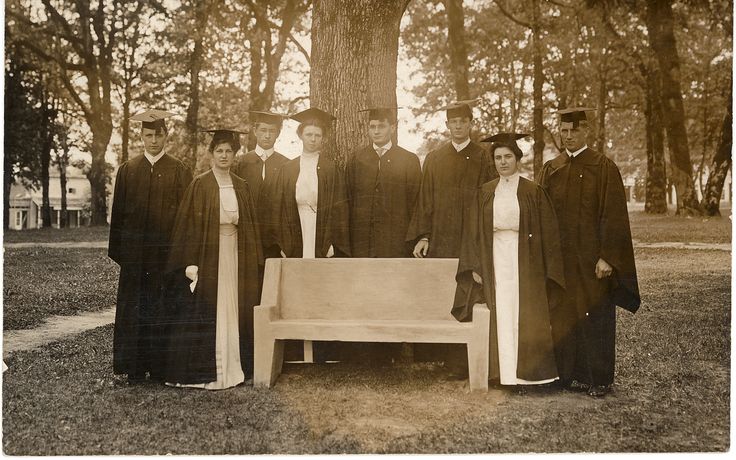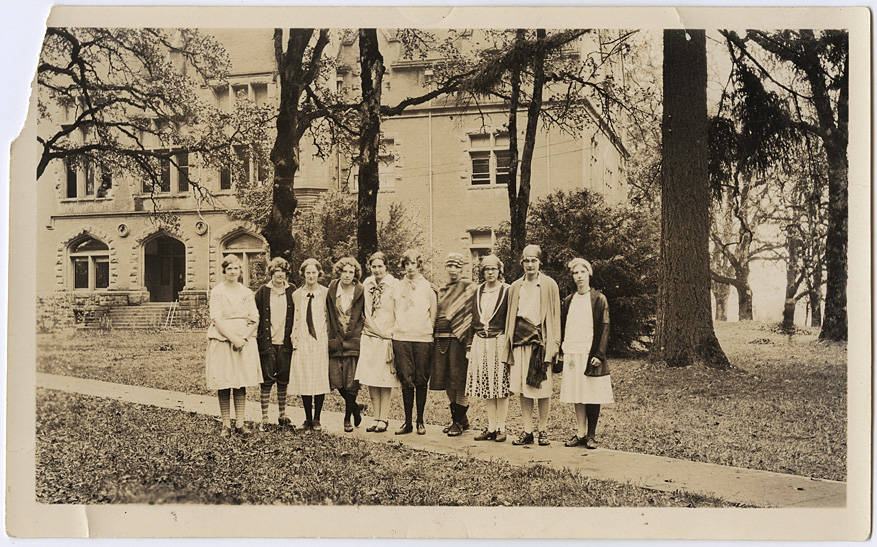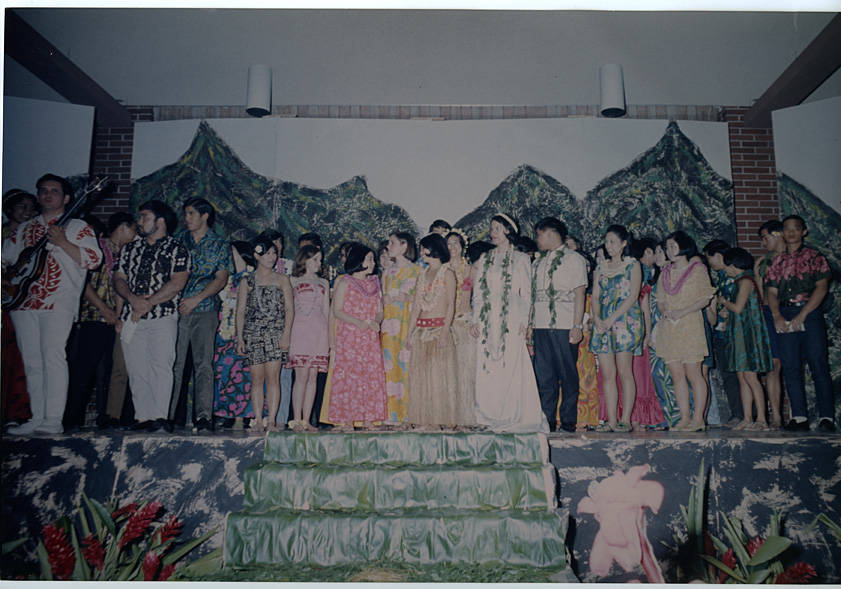Pacific University's 16th president, who died in September 2024, left an indelible mark on the university not only in its programs and campuses but also in the Pacific community members whom "Dr. Phil" always made feel like treasured friends.
History of Pacific University
Founded in 1849, Oregon's Pacific University traces its roots to a log cabin meeting house in Forest Grove where the Rev. Harvey Clark, a Congregationalist minister, and Tabitha Brown, a former teacher from Massachusetts, cared for and educated orphans of the Oregon Trail.
In 1846, a remarkable 66-year-old widow completed a rugged trip west with members of her family to live in the Oregon Territory. Tabitha Moffatt Brown arrived in Oregon with hardly a penny to her name and chose to settle in the West Tualatin Plains
1849 | Pacific University is founded
Brown, the Rev. Harvey Clark and his wife, Emeline, concerned for the welfare of the many orphans in the area, made arrangements to use a local meetinghouse in Forest Grove, Oregon, as a school, which became known as the Orphan Asylum. By 1848, Brown was "house-mother" to the students there and a driving force behind the school.

In the summer of 1848, the Rev. George H. Atkinson came to Oregon, commissioned by the Home Missionary Society of the Congregational Church Association to "found an academy that shall grow into a college... on the New England model." Atkinson and Clark drew up plans for a new educational institution for children, on land donated by Clark. Brown donated $500 and agreed to convert the Orphan Asylum into a new school. On September 26, 1849, the Territorial Legislature gave its official sanction to the new school, establishing by charter the Tualatin Academy. It was the first official act of the new provisional government and predates statehood by nearly 10 years.
To house the academy, Old College Hall was built in 1850. Old College Hall is still in use today. It houses Pacific's museum and is the site of important university traditions, including Sign, Shake and Ring, a tradition unique to Pacific. At those times, the bell can be heard ringing out across campus.
1863 | Pacific awards first baccalaureate degree
By 1854 a new charter had been granted, establishing "Tualatin Academy and Pacific University" and college classes began to be offered. Congregational missionaries were key leaders in the establishment and growth of the university, and that legacy is still regarded as an important influence. Pacific, along with such colleges as Dartmouth, Carleton, Oberlin, Grinnell, Rollins and Pomona, celebrate a tradition that dates back to the establishment of higher education in America more than 350 years ago with the founding of Harvard College by Congregational pioneers on the first American frontier.
As an independent university, Pacific continues to maintain ties with the United Church of Christ Council for Higher Education. The university supports religious pluralism, and is committed to instilling a sense of values and ethics, compassion, caring and conscience in both students and programs.
Pacific awarded its first baccalaureate degree in 1863 - the first in the region. The university established its Alumni Association as the "Society of Alumni."
1896 | Pacific receives a bronze Chinese statue as a gift. It soon becomes a college icon, called Boxer.
Gifted to the university around 1896 by the family of Rev. J.E. Walker, the Chinese statue is a bronze incense burner in the form of a qilin. It was originally known as "College Spirit" at Pacific and inspired the concept of Boxer, which became Pacific's mascot in 1968. In its many incarnations, Boxer has been an icon representing Pacific's spirit, pride and honor.

1911 | State approves the offering of teaching certificates
In 1911, Pacific became one of just three colleges authorized by the state to recommend graduates for high school teaching certificates.
1915 | Academy closes as public high schools come on the scene
By 1920, the school had expanded to five buildings, including Herrick Hall (built in 1883), an all-female dormitory that played an important role in enabling more woman to earn degrees by providing an living space for female students, and Carnegie Hall (built in 1912), the university's first library building and one of only three academic libraries built by the Carnegie Endowment in the West — and the only one in the Pacific Northwest.

1959 | Pacific University's Students of Hawai‘i Club, Nā Haumāna O Hawai‘i, is founded

Throughout the latter half of the 20th century, Pacific University continued to expand with new academic offerings. Other health professions programs were launched, including Physical Therapy in 1975, Occupational Therapy in 1984, and Professional Psychology in 1985.
1968 | Boxer officially replaces the badger as the school mascot
1985 | Grand opening of Trombley Square, a popular student gathering place at the heart of the Forest Grove campus
1994 | The School of Education (now College of Education) is established
In 1994, the School of Education, now the College of Education, was established through reorganization of the professional teacher education programs that had been part of the College of Arts and Sciences. A year later, the Physician Assistant Studies program was added.
2006 | The Pacific University Health Professions Campus (now Hillsboro Campus) opens
In 2004, the College of Health Professions was formed; consolidating all the health programs except for the College of Optometry under one umbrella. Pacific University's Hillsboro Campus opened in 2006 as home of the new college. In the same year, new programs in Pharmacy and Dental Hygiene were established, followed by a Master of Healthcare Administration program in 2008.
2007 | The Lincoln Park Athletic Complex is constructed, offering state-of-the-art athletic facilities
President Phil Creighton's tenure (2003-2009) marked a prosperous and expansive period in university history. A $51 million capital campaign was completed in 2006, helping to fuel a building boom. Projects included the new campus in Hillsboro, a new library, two LEED-certified residence halls, an education and business building and extensive new athletics facilities. During this period, undergraduate enrollment increased by 18.5 percent and graduate enrollment increased by 22 percent, almost exclusively in the health professions.
2009 | Pacific announces its 17th President, Dr. Lesley M. Hallick
2014 | Cascade Hall opens for student residents and is the seventh university building to be LEED-certified for sustainable building design

In 2009, Dr. Lesley M. Hallick became the university's 17th president. Under her leadership, the university has continued to grow. The Woodburn Campus opened in 2012, offering undergraduate and graduate teacher-preparation programs within the College of Education. In 2013, the College of Business was founded to further develop the existing undergraduate business degree programs and add graduate-level programs.
2019 | Pacific University celebrates the 170th anniversary of its founding
Pacific University continues to plan for the future with Imagine Pacific 2020, a strategic planning effort designed to postion the university for the future while maintaining its core identity as a close community dedicated to learning and discovery.
"We are building on the mission of the university from its earliest roots, an institution established by our founders because they believed deeply in the opportunity of education for all."
— Vision 2020 Strategic Plan
Today, Pacific University is a comprehensive university serving more than 3,800 undergraduate, graduate and professional students in the liberal arts and sciences, optometry, education, healthcare and business.
"This page is currently under review by the Indigenous Engagement Committee, a subcommittee of the University Diversity Committee."
Headlines
The ceremony, honoring the Pacific alumnus and nine-term Congressman, kicked off the celebration of Pacific University's 175th anniversary.
The bronze qilin statue, the namesake of Pacific University and beloved by students and alumni alike, is reunited with the university after a 55-year absence.





